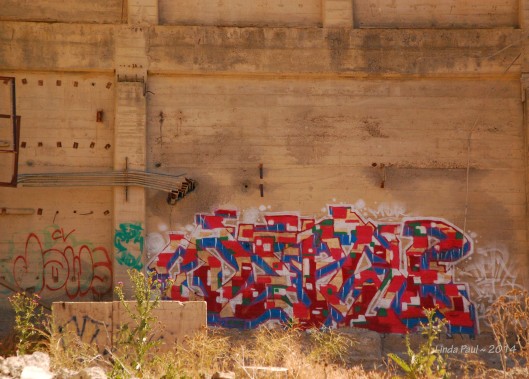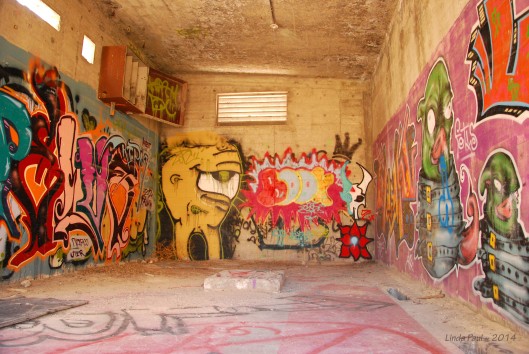Tags
art, Communication, defiance, graffiti, Lime Oregon, Portland Cement, rage, social commentary, spray paint
“People respond to art with their minds, heart, and guts; you shouldn’t need a degree in art history to do that, and for true great art, that works,” explains Julian Freeman in the Introduction to his book, Art; A crash course. The box of “art” is constantly changing, expanding, and pushing boundaries of thought and social conscience. Art surrounds us, often subliminally, like the Brillo box immortalized by Andy Warhol. Art canvass es are, and always have been, far more than a piece of cloth or papyrus. Art began with mankind’s early scratchings and etchings in caves and on rocks.
es are, and always have been, far more than a piece of cloth or papyrus. Art began with mankind’s early scratchings and etchings in caves and on rocks.
The human body is a canvass for art; the clothing we drape ourselves with is and displays art; practically everything tangible we have ever purchased has some element of art built into it or attached to it. Large sums of money give birth to murals that transform mundane blank spaces on walls and buildings into art. So, why is it that so many of us shout and moan over graffiti?
We associate graffiti with the arrogance and destructiveness of untamed youth. And sometimes it is that. There is nothing more maddening that finding a piece of history or another beautiful work of art that has been destroyed by some thoughtless idiot with a pen knife or a spray can. But not all graffiti is destructive and much of it is quite beautiful and even more of it is laden with social commentary and genuine emotion. Graffiti is one way for disenfranchised people to shout out to the world: I am! I exist! I think! I feel! I hurt! I’m hungry! I’m angry!
Though he was not thinking in this context, photo journalist, Otto von Münchow points out:
Creativity is an act of defiance. You are challenging status quo. You are questioning accepted truth and principles. As a creator yourself, you are asking three universal questions that mock the conventional wisdom: «Why do I have to obey rules?» «Why can’t I be different?» «Why can’t I do it my way?» These are the impulses that guide all creative people whether they admit it or not. Every act of creation is also an act of destruction and abandonment. Something has to be cast aside to make way for the new.
What better canvass for creative expression than an abandoned factory? In 1916, the Acme Cement Plaster Company built a plant in Lime, Oregon. It went through several iterations until 1979 when Oregon Portland Cement Company moved operations up the road a few miles to a new plant. As the old plant slowly succumbs to weather and gravity, graffiti artists arrive from God knows where to spray their hearts out with impunity.







 Does anger, pain and defiance drive creativity? Or does creativity require defiance and destruction? As Julian Freeman says, “Art was made by real people.” And I would add, art is for real people—and oh my, maybe even real critters.
Does anger, pain and defiance drive creativity? Or does creativity require defiance and destruction? As Julian Freeman says, “Art was made by real people.” And I would add, art is for real people—and oh my, maybe even real critters.


Enjoyed reading this post, Lynne… interesting thoughts and I like your images from the old cement factory…
LikeLike
Thanks for dropping by Sue. Glad you enjoyed.
LikeLike
Great post with some very valid points.
A few years ago I was in Granada to visit a couple of friends, one of whom was a graffiti artist. The Andalucian city is famous throughout the world among graffiti aficionados.
I wrote an article on the trip, which can be seen on my site: http://bryanhemming.wordpress.com/146-2/
At the bottom of the article is a link to some photos of Granada graffiti.
LikeLike
It’s interesting to note that graffiti in Oregon is not that different from Graffiti in Granada. Art revisits the same themes through the ages and around the globe.
LikeLike
Art as creation and destruction, I read about this process in Rollo May’s book on creativity.Sometimes I see really good graffitti that i would call art.
LikeLike
It seems that graffiti falls into maybe 3 categories: art (the creative interplay of form, color, and imagination), social commentary, and scribbling. The scribblers I think we could live without. Let ’em use paper so it’s easily disposed of. 😮
LikeLiked by 1 person
Linda, this may be my favorite post you have done. I love the quote you boxed in to highlight. The editorial cartoon can say so much with a picture that words cannot match. The same goes with a great piece of wall art that can make a statement, whether it is political, religious, or about life. Creativity is so greatly craved and needed, it is awe inspiring to see it in unexpected places. Thanks, BTG
LikeLike
Thank you BTG. I’m we connected over art and so much more.
LikeLike
I am a big fan of graffiti for the most part. Some “tagging” is inappropriate and put where it doesn’t belong … but I find much of it marvellous and creative. I may just do a post about it. You have inspired me.
LikeLike
Cool. I’ll look forward to it. This is the type of thing that makes blogging worth while. Shared inspiration.
LikeLike